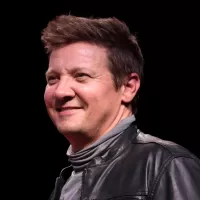A sonic boom is a loud, explosive sound created by shock waves when an object exceeds the speed of sound. It's caused by the compression of air as the object moves, creating a pressure difference that results in a powerful release of energy, perceived as a loud boom. The sound resembles an explosion or thunderclap due to the rapid and intense nature of the shock waves reaching the ear.
1969: Government Loses Sonic Boom Lawsuit Appeal
In 1969, the government lost its appeal in a class-action lawsuit stemming from the 1964 Oklahoma City sonic boom tests, which had generated 15,000 complaints.
2006: Quiet Spike Testing
In 2006, NASA and Gulfstream Aerospace tested the Quiet Spike on NASA Dryden's F-15B aircraft. The Quiet Spike, designed to weaken shock waves at supersonic speeds, underwent over 50 test flights.
2015: Supersonic Aircraft Defined
In 2015, supersonic aircraft were defined as those capable of exceeding Mach 1, the speed of sound, with typical speeds ranging from 700 to 1,500 mph.
2018: NASA Awards Low Boom Flight Demonstrator Contract
In 2018, NASA awarded Lockheed Martin a $247.5 million contract to construct the Low Boom Flight Demonstrator, aiming to reduce sonic booms to the sound of a car door closing.
October 2023: Low Boom Flight Demonstrator Expected Flight
As of October 2023, the first flight of the Low Boom Flight Demonstrator was expected in 2024.
2024: Expected First Flight of Low Boom Flight Demonstrator
As of October 2023, the first flight of the Low Boom Flight Demonstrator was expected in 2024.
Trending

Eugenio Derbez is a highly successful Mexican actor and comedian renowned for his work in both Spanish and English language...

2 months ago Angela Bassett As Queen Ramonda Stuns At Vogue World 2025; Black Panther Tribute.

8 months ago Tesla Board Initiated CEO Search to Replace Elon Musk Amidst Leadership Concerns.

9 months ago Milo Manheim and Liz Gillies bond in Little Shop of Horrors, extend run.

1 month ago Alexander Skarsgård reminds Miriam Margolyes of their meeting; addresses sexuality question, states 'not really' gay.

2 months ago Jeremy Renner faces accusations of ICE threat and misconduct controversy in Hollywood.
Popular

Stranger Things created by the Duffer Brothers is a popular...

XXXTentacion born Jahseh Dwayne Ricardo Onfroy was a controversial yet...

Kelsey Grammer is an accomplished American actor producer and singer...

Candace Owens is an American conservative political commentator and author...

Bernie Sanders is a prominent American politician currently serving as...

Melania Trump a Slovenian-American former model has served as First...

